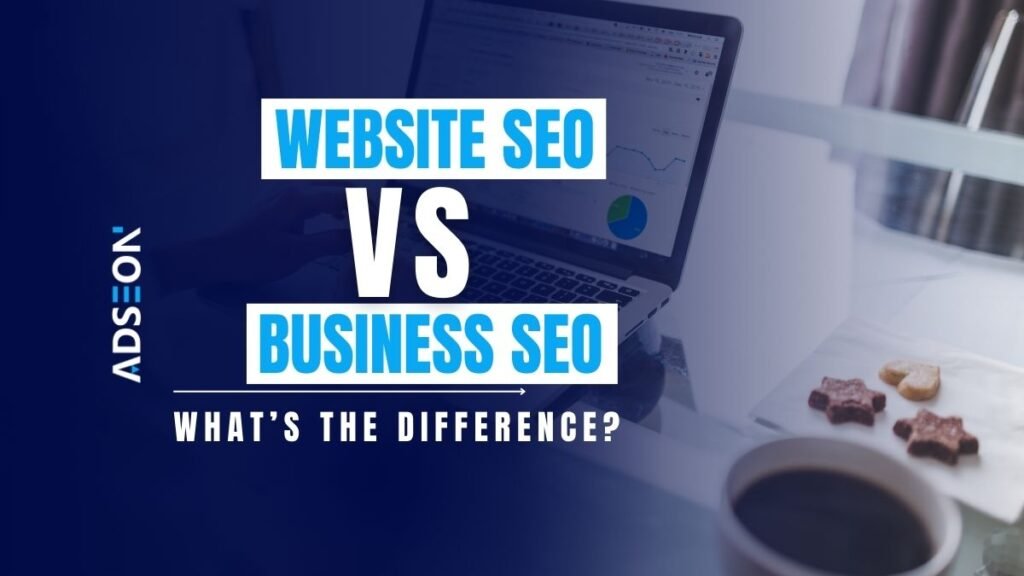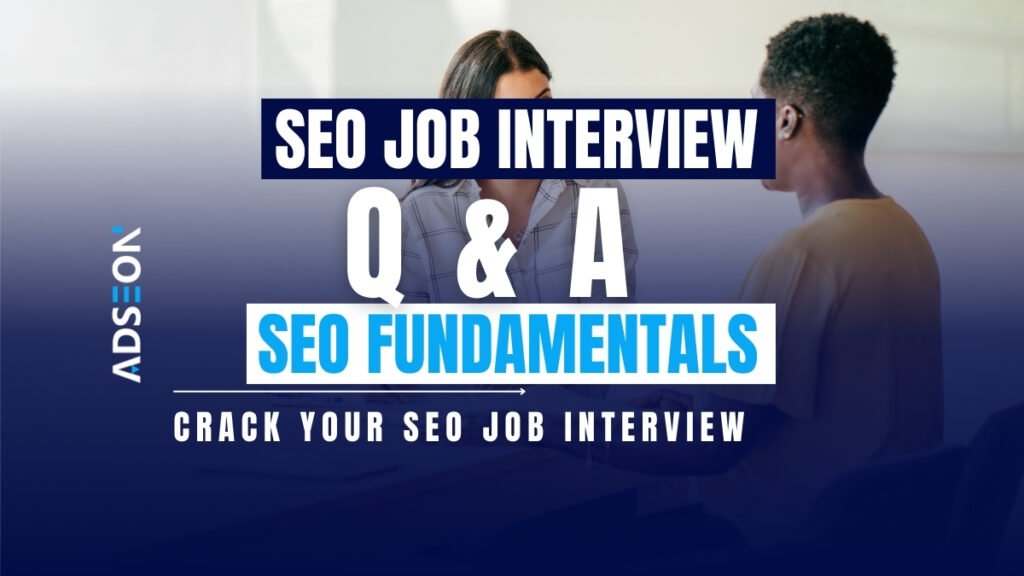Top 40 SEO Job Interview Q & A About On-Page SEO
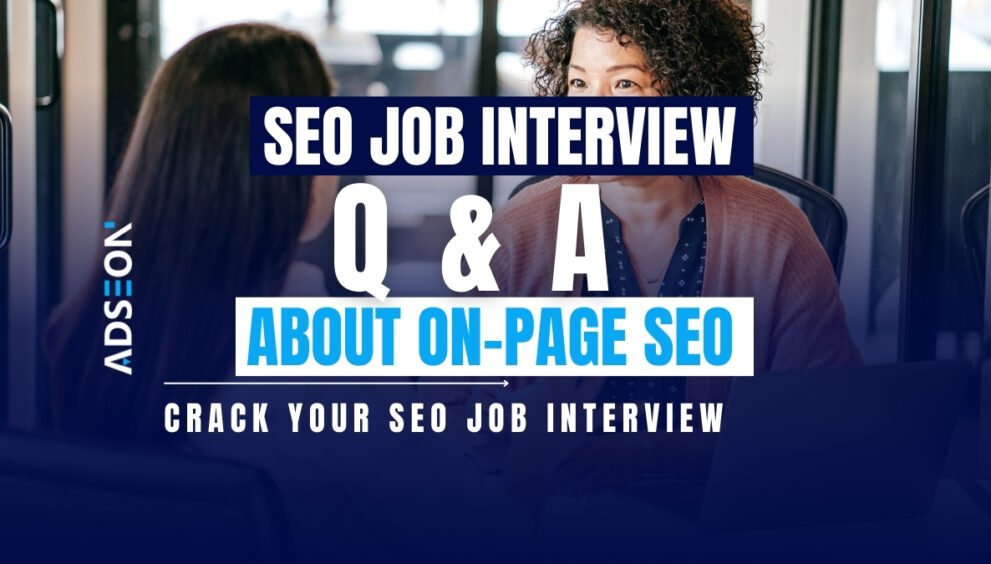
1. What are the most critical on-page SEO factors you consider when optimizing a page?
The key on-page SEO factors include:
- Title tag: Make sure it’s relevant to the content and includes the main keyword.
- Meta description: A short summary that encourages users to click through.
- Headers (H1, H2, etc.): Use headings to structure the content and include keywords naturally.
- Keyword placement: Use the primary and related keywords throughout the page, but don’t overdo it.
- Content quality: Ensure the content is unique, informative, and answers user questions.
- Internal links: Link to other relevant pages on your site to guide users and search engines.
- URL structure: Keep URLs short, descriptive, and include keywords if possible.
- Mobile-friendliness: Ensure the page is responsive and works well on all devices.
- Page speed: Fast-loading pages provide a better user experience and rank higher.
2. How do you optimize a webpage’s title tag for SEO?
To optimize a title tag:
- Include the main keyword: Place your primary keyword near the beginning of the title.
- Keep it short and clear: Aim for around 50-60 characters so it doesn’t get cut off in search results.
- Make it descriptive: It should tell users what the page is about.
- Engage users: Add something compelling that encourages users to click, like “Best,” “Guide,” or “Tips.”
3. What is keyword cannibalization, and how do you fix it?
Keyword cannibalization happens when multiple pages on your site compete for the same keyword, causing confusion for search engines. To fix it:
- Audit your content: Identify which pages are targeting the same keyword.
- Merge or update content: If two pages are similar, combine them into one comprehensive page.
- Use different keywords: Ensure each page targets a unique keyword or variation.
- Internal linking: Make sure to link related pages properly, giving priority to the most important page.
4. How would you go about optimizing a website’s internal linking structure?
To optimize internal linking:
- Link relevant pages: Connect related pages to help users find more information and spread link equity.
- Use descriptive anchor text: The clickable text should describe the page it links to, ideally including keywords.
- Ensure logical flow: The most important pages should be easily accessible, especially from the homepage.
- Avoid too many links: Don’t overdo it—only link when it makes sense for the user experience.
5. How important is page speed for on-page SEO, and how would you improve it?
Page speed is very important because it affects both user experience and search rankings. To improve it:
- Optimize images: Compress and resize images without losing quality.
- Use browser caching: Store parts of your website so it loads faster on repeat visits.
- Minify CSS, JavaScript, and HTML: Remove unnecessary code to reduce page size.
- Enable a Content Delivery Network (CDN): A CDN distributes content to servers worldwide, making your site load faster for users.
- Reduce server response time: Ensure your hosting is fast and reliable.
6. What role does meta description play in SEO, and how do you optimize it?
Meta descriptions don’t directly impact rankings but can influence click-through rates (CTR), which can indirectly affect SEO. To optimize a meta description:
- Keep it under 160 characters: So it fits within search result limits.
- Include the main keyword: Make it clear what the page is about.
- Make it engaging: Write a summary that entices users to click through, like a call to action (“Learn more,” “Discover”).
- Unique for each page: Every page should have a different meta description that accurately describes its content.
7. How do you approach optimizing images for SEO?
To optimize images:
- Use descriptive file names: Name the image files with relevant keywords (e.g., “blue-widget.jpg” instead of “IMG123.jpg”).
- Compress images: Reduce file size to ensure fast page loading without losing quality.
- Add alt text: Describe the image using relevant keywords. This helps search engines and improves accessibility.
- Choose the right format: Use modern formats like WebP or optimized JPEG/PNG for better performance.
- Use responsive images: Ensure images scale properly on different devices.
8. What role does keyword density play in modern SEO?
Keyword density refers to how often a keyword appears on a page compared to the total word count. In modern SEO, keyword density isn’t as important as it used to be. Search engines focus more on context and content quality than the frequency of keywords. However, it’s still important to include keywords naturally without overstuffing. Instead of focusing on density, use related terms and synonyms to create relevant, user-friendly content.
9. How do you optimize a webpage for featured snippets?
To optimize for featured snippets:
- Answer questions clearly: Use short, concise answers (40-50 words) at the top of your content.
- Use headers and lists: Format information using bullet points, numbered lists, or tables.
- Target question-based keywords: Use phrases like “how,” “what,” and “why” in headings or within the content.
- Structured data: Add schema markup to help search engines understand the page content.
- Provide detailed and useful content: Make sure the rest of the content is thorough and informative to support the snippet.
10. How do you handle duplicate title tags across multiple pages?
To handle duplicate title tags:
- Create unique titles: Ensure each page has a distinct, relevant title that reflects the page’s content.
- Use dynamic titles: If pages are similar, like product listings, use dynamic titles (e.g., “Buy Red Shoes – Brand Name”).
- Canonical tags: For pages with similar content, use canonical tags to tell search engines which version to prioritize.
- Regular audits: Use SEO tools to identify duplicate titles and fix them regularly.
11. What are the best practices for writing SEO-friendly URLs?
For SEO-friendly URLs:
- Keep them short and descriptive: Use a few relevant words to describe the page.
- Include a keyword: Use the primary keyword in the URL.
- Avoid unnecessary words: Remove stop words like “and,” “the,” and “of.”
- Use hyphens, not underscores: Separate words with hyphens for better readability.
- Lowercase letters: Use lowercase letters to avoid confusion with case sensitivity.
12. How does user experience (UX) influence on-page SEO?
User experience is critical to SEO because it affects how users interact with your site. A good UX can:
- Increase engagement: More time on the page and lower bounce rates signal to Google that your content is valuable.
- Improve navigation: Easy-to-use menus and clear calls to action guide users through the site, improving performance.
- Boost mobile-friendliness: A responsive design ensures your site works well on all devices, a key ranking factor.
- Faster page speed: Faster loading times provide a better experience and improve rankings.
13. How do you optimize for voice search in on-page SEO?
To optimize for voice search:
- Use conversational language: Write content that mimics how people speak.
- Target long-tail keywords: Focus on questions or phrases that people would say aloud, like “What’s the best way to…?”
- Answer questions directly: Include clear, short answers at the top of the page to target voice search queries.
- Optimize for local searches: Voice searches often include “near me” queries, so make sure to include local SEO practices.
- Use structured data: Mark up your content with schema to help search engines understand it better.
14. What is the role of content hierarchy (headings) in SEO?
Content hierarchy using headings (H1, H2, etc.) helps both users and search engines:
- Improve readability: Headings break up content, making it easier to read and navigate.
- Highlight key sections: Search engines use headings to understand the structure and main topics of the page.
- Prioritize keywords: Place keywords in headings (H1 for main keywords, H2/H3 for related terms) to emphasize their importance.
- Enhance user experience: A clear structure keeps users engaged and helps them find the information they need quickly.
15. How do you optimize website accessibility for search engines?
To optimize website accessibility for search engines:
- Use descriptive alt text for images: This helps both visually impaired users and search engines understand the content.
- Provide clear navigation: Ensure menus, buttons, and links are easy to access and navigate.
- Use schema markup: Add structured data to help search engines understand the page elements.
- Readable URLs and text: Use simple, readable URLs and content for both users and search engines.
- Ensure mobile-friendliness: A responsive design ensures accessibility on all devices, which also improves SEO.
16. How do you handle pagination from an SEO perspective?
To handle pagination:
- Use rel=“prev” and rel=“next”: These tags tell search engines that pages are part of a sequence.
- Canonical tags: Point to the main page of a paginated series to avoid duplicate content issues.
- Create clear navigation: Make it easy for users to move between pages in a sequence.
- Consolidate content: If possible, merge paginated content into fewer pages to reduce fragmentation.
17. What’s the best way to optimize a landing page for SEO?
To optimize a landing page:
- Target a single keyword: Focus on one main keyword for better relevance.
- Use clear headings: Include your primary keyword in the H1 and use subheadings (H2, H3) for supporting content.
- Write compelling meta tags: Create an engaging title and meta description that attract clicks.
- Add internal and external links: Link to related pages on your site and credible external sources.
- Fast loading: Ensure the page loads quickly for better user experience and ranking.
- Clear call-to-action (CTA): Make it easy for users to take the desired action (e.g., sign up, buy, etc.).
18. How does Google treat nofollow vs. follow internal links?
- Follow links: These pass “link juice” or ranking power to the page being linked to, helping it rank better.
- Nofollow links: These tell Google not to pass ranking power to the linked page. Nofollow links are typically used for paid links or user-generated content like blog comments.
- Internal nofollow links: These should be used sparingly, as most internal links should be follow links to help Google crawl your site effectively.
19. What is the relationship between Core Web Vitals and on-page SEO?
Core Web Vitals measure how users experience your site and are part of Google’s ranking factors:
- Largest Contentful Paint (LCP): Measures how quickly the main content loads—affects user experience and SEO.
- First Input Delay (FID): Measures the time it takes for the site to become interactive—helps ensure good user engagement.
- Cumulative Layout Shift (CLS): Measures visual stability, preventing annoying shifts in content as it loads. Optimizing these metrics leads to better rankings and improved user experience.
20. How do you optimize a page for image search?
To optimize for image search:
- Use descriptive file names: Name the image files with keywords relevant to the content.
- Add alt text: Write clear, descriptive alt text that includes keywords to help search engines and visually impaired users.
- Compress images: Reduce the file size to improve loading times without losing quality.
- Use structured data: Add schema markup for images to help search engines understand their content.
- Place images near relevant text: Position images close to the most relevant text on the page to improve their relevance.
21. How do you optimize for Google’s featured snippets and People Also Ask (PAA) boxes?
To optimize for featured snippets and PAA:
- Target question-based keywords: Use keywords in the form of questions like “how,” “what,” or “why” that match user intent.
- Provide concise answers: Offer a clear and direct answer to the question in the first paragraph (40-50 words works well for snippets).
- Use structured content: Organize content with headings (H2, H3) and lists or tables to increase the chances of appearing in snippets.
- Include FAQ sections: Add a FAQ section at the bottom of your content to match common “People Also Ask” queries.
22. How do you balance SEO with user experience (UX) when designing a new webpage?
To balance SEO with UX:
- Prioritize user needs: Focus on what users are looking for and make the design intuitive.
- Ensure mobile-friendliness: Mobile optimization is essential for both UX and SEO.
- Optimize page speed: Fast-loading pages improve both rankings and user satisfaction.
- Use clear navigation: Easy-to-find links and menus help users move through the site while ensuring search engines can crawl it efficiently.
- Readable content: Write for users first with engaging, clear language while naturally incorporating keywords for SEO.
23. How would you handle optimizing long-form content (e.g., 5000+ word articles) for SEO?
To optimize long-form content:
- Use clear headings: Break up content with H2, H3 headings that include target keywords to help both readers and search engines understand the structure.
- Internal linking: Link to related pages to distribute authority and help users find more information.
- Create a table of contents: Use a clickable table of contents for easier navigation and a better user experience.
- Focus on user intent: Answer multiple related questions within the article to satisfy different types of searches.
- Maintain readability: Use shorter paragraphs, bullet points, and images to keep the content engaging.
24. How do you deal with keyword stuffing penalties while still targeting multiple terms on a single page?
To avoid keyword stuffing:
- Use natural language: Write content that flows naturally, focusing on user intent rather than forcing keywords.
- Use synonyms and related terms: Google understands semantically related words, so you don’t have to repeat the exact keyword.
- Target long-tail keywords: Focus on variations of the main keyword and phrases that people might use in searches.
- Focus on quality content: Create useful and engaging content that solves the user’s problem—this is more important than overloading with keywords.
25. How do you approach the balance between user readability and SEO when structuring content?
To balance readability and SEO:
- Use headings: Break content into sections with clear, descriptive headings (H1, H2, H3).
- Short paragraphs and sentences: Keep text easy to scan and understand for both users and search engines.
- Incorporate keywords naturally: Don’t overuse keywords; instead, place them where they fit naturally.
- Use visuals: Add images, infographics, or videos to break up text and engage readers.
- Write for users first: Prioritize helpful content over keyword placement—search engines reward content that users find valuable.
26. What advanced techniques do you use to optimize a page’s HTML structure for SEO?
Advanced HTML techniques for SEO:
- Schema markup: Use structured data to help search engines understand your content better and improve rich snippets.
- Clean, well-organized code: Ensure your HTML is error-free and properly structured for faster loading and better crawling.
- Optimized headings (H1, H2, etc.): Use keyword-rich headings in a clear hierarchy.
- Meta tags: Optimize meta titles and descriptions with relevant keywords.
- Lazy loading: Implement lazy loading for images and videos to improve page speed without sacrificing user experience.
27. How do you use tools like Heatmaps to optimize on-page SEO?
Heatmaps show where users interact most on your page:
- Identify high-traffic areas: Place important content or CTAs (calls-to-action) in the areas users are most engaged with.
- Improve page structure: Adjust layouts based on how users scroll, click, and interact to keep them on the page longer.
- Fix underperforming sections: Heatmaps help you identify sections that users ignore, so you can redesign or optimize these areas.
- Optimize internal linking: Use heatmaps to place internal links where users are most likely to click, improving both SEO and user engagement.
28. How do you handle seasonal pages, such as Black Friday deals, without hurting SEO in off-seasons?
For seasonal pages:
- Keep the page live year-round: Update it regularly with countdowns or “next year” information to keep it relevant.
- Use internal linking: Link to the seasonal page from other pages on your site, even during the off-season.
- Refresh content: Update the content each year with new deals, keywords, and offers.
- Use 301 redirects: If you create new seasonal pages, redirect old ones to the new URL to retain SEO value.
29. How would you approach optimizing for entity-based SEO (concepts, brands, people)?
For entity-based SEO:
- Create detailed profiles: Build detailed pages that explain the entity (brand, person, or concept) with rich information.
- Use structured data: Add schema markup to help search engines recognize and link the entity to related concepts.
- Focus on authority and relevance: Create high-quality content that highlights the entity’s expertise and relevance to users’ queries.
- Earn backlinks: Get authoritative sites to link to your entity’s page to build trust and visibility.
30. How do you optimize dynamic content (e.g., product recommendation engines) from an on-page SEO perspective?
To optimize dynamic content:
- Use static URLs: Ensure dynamic content like product recommendations has unique, crawlable URLs.
- Cache dynamic content: Use caching to speed up the loading of personalized recommendations without slowing down the site.
- Optimize metadata: Ensure that each dynamically generated page has a unique meta title and description.
- Prevent duplicate content: Use canonical tags to avoid duplicate content issues with dynamic pages.
- Structured data: Mark up dynamic content using structured data to help search engines understand product recommendations better.
31. How do you optimize for user engagement signals (e.g., bounce rate, dwell time) while maintaining SEO performance?
To improve user engagement signals:
- Create valuable content: Offer useful, relevant information that matches user intent to keep visitors on the page longer (improving dwell time).
- Improve page speed: Faster load times reduce bounce rates.
- Engage users early: Use eye-catching headlines, visuals, and intro paragraphs to grab attention quickly.
- Internal linking: Encourage visitors to explore related content by linking to other helpful pages.
- Readable design: Break content into digestible sections with headings, bullet points, and visuals to make it easy to scan.
32. How would you optimize FAQ schema markup to target featured snippets effectively?
To optimize FAQ schema:
- Direct answers: Ensure each FAQ question is concise, and the answer is clear and direct, matching the format of featured snippets.
- Use relevant keywords: Include important keywords naturally in both the questions and answers.
- Organize logically: Group related questions together, making the content easy for search engines to crawl.
- Structured data: Use properly formatted FAQ schema markup to help search engines understand your content and improve the chances of appearing in featured snippets.
33. How do you prioritize on-page SEO for websites with thousands of landing pages (e.g., SaaS or enterprise sites)?
For large sites:
- Focus on high-impact pages: Prioritize the pages that drive the most traffic, conversions, or business value.
- Automate meta tags: Use dynamic templates for meta titles and descriptions to ensure every page is optimized efficiently.
- Use content clusters: Group related pages into topic clusters to target multiple keywords and improve internal linking.
- Monitor crawlability: Ensure that all important pages are easily crawled by search engines and that your site architecture is clear.
34. How do you prevent keyword cannibalization when targeting multiple long-tail variations of a keyword?
To avoid keyword cannibalization:
- Create distinct content: Assign specific keywords or long-tail variations to different pages, ensuring each page serves a unique purpose.
- Use topic clusters: Group related long-tail keywords under a main content pillar, with supporting pages linking back to it.
- Consolidate content: If two or more pages are competing for the same keyword, consider merging them into one comprehensive page.
35. How do you implement content silos or topic clusters for optimizing a site with complex content architecture?
For content silos and topic clusters:
- Organize by theme: Create a central “pillar” page on a broad topic, then link to “cluster” pages covering specific subtopics.
- Internal linking: Ensure all cluster pages link back to the pillar page and vice versa to distribute authority.
- Logical URL structure: Use a clear URL hierarchy to reflect the content silo or topic cluster.
- Maintain consistency: Keep each content silo focused on a specific theme, ensuring users and search engines understand the structure.
36. How do you balance content length and depth for SEO without overwhelming users with too much information?
To balance content length and depth:
- Break content into sections: Use headings, bullet points, and images to make long content more digestible.
- Offer summaries: Provide a concise summary or key takeaways at the start or end of the content for users who want quick information.
- Create a table of contents: For very long content, use a clickable table of contents to help users navigate specific sections.
- Focus on quality: Make sure every piece of information is useful and relevant—avoid adding unnecessary content just to hit a word count.
37. How do you handle on-page SEO when content is hidden behind interactive elements, such as tabs or sliders?
For content behind interactive elements:
- Ensure crawlability: Make sure that hidden content (in tabs, sliders) is accessible and crawlable by search engines.
- Include content in the HTML: Even if it’s hidden by default, the content should be present in the page’s HTML to ensure it’s indexed.
- Lazy loading: Use lazy loading only for images or non-essential content, not for critical on-page text that should be visible for SEO purposes.
38. How do you optimize for different user personas while still maintaining focus on the main keyword strategy?
To cater to different personas:
- Segment content: Use different sections or subpages that speak directly to the needs of different personas, while keeping the main keyword in focus.
- Create varied content: Incorporate different types of content (e.g., videos, infographics, case studies) that appeal to each persona’s preferences.
- Long-tail keywords: Use variations of your main keyword that align with different personas’ search behaviors.
39. How do you handle duplicate content that is generated by external factors (e.g., syndication or content scraping)?
To manage duplicate content:
- Canonical tags: Use canonical tags to point to the original version of the content to ensure it receives the SEO credit.
- Disallow in robots.txt: Block search engines from crawling duplicate pages when needed.
- Monitor with tools: Use tools like Google Search Console to identify duplicate content issues and address them promptly.
- Rel=”nofollow”: For syndicated content, use a nofollow tag on links back to the original content to prevent dilution of authority.
40. How would you optimize for multiple intent types (transactional, informational, navigational) on a single page?
To target multiple intent types:
- Structure content logically: Start with informational content that answers questions, and then move into transactional CTAs (calls-to-action) for users ready to convert.
- Create clear navigation: Offer internal links to guide users to more specific pages based on their intent (e.g., product pages for transactional intent).
- Incorporate both types of keywords: Use a mix of informational and transactional keywords throughout the page to attract different intents.
- Use FAQs: Include a FAQ section to address both navigational and informational questions, guiding users through different stages of the journey.


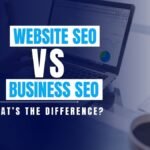
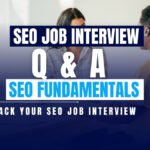
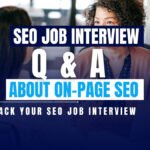
 English
English 